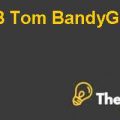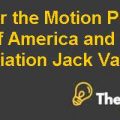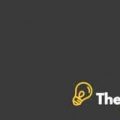Tiffany & Company 1993 Case Solution
Introduction:
Tiffany & Company is the worldwide leading American luxury company, it established in 1837, by Charles Lewis Tiffany and John B. Young, headquartered in New York. Tiffany and Company offers different type of products such as: jewelleries, timepieces, silverware, fragrances, crystal, and stationary. In 1979, Tiffany was acquired by Avon. Avon is door-to-door global marketer, it worked to expand Tiffany’ product line in larger middle market. The diversified sales increased from $84 million in 1979 to $124 million in 1983.
Problem statement:
In this new agreement, Tiffany was responsible for operations in Japan. The company looked forward to the new agreement, as it gave the company the responsibility to manage its inventory. Previously, the company just sold its inventory to Mitsukoshi on wholesale and then Mitsukoshi resold the inventory in Japanese market on retail. Before this agreement, there were no affects of fluctuation in rate of Yen/Dollar on Tiffany’s revenue, as Mitsukoshi dealt with it; Tiffany now faces both opportunity and risk from this agreement. Since theJapanese market is a growing market, the sales of the company can be increased through control of the retail prices. Moreover, company has to bear the risk of exchange rate fluctuation between time to purchased, and time to cash settlement.
Alternative:
Since Tiffany is a multinational company and it is selling their product in various countries, the company should have a foreign currency program to cover the foreign exchange rates. The main objective of hedging exchange rate is that hedging will add value to the firm. If there is change in exchange rate, it is possible to adjust retail prices.
Tiffany has two alternatives to reduce the exchange rate risk; one is to enter into forward contract, or to buy yen put option. These two derivative instruments are used to hedge risks and decrease the earning instability.
1. Forward contract:
Forward contract is an agreement to exchange any amount of currency at a specified rate and date. In this contract, both buyer and seller have rights and obligations to transact at specified rate and date. The buyer of the forward contract has an obligation to take delivery of the currency at maturity date and pay the agreed amount on the maturity. On the other hand, the seller of the forward contract has an obligation to deliver the currency at maturity date and accept the agreed amount at the maturity date
Since, Tiffany has to sell yen to counterparty for dollar at predetermined price in future; it has a short position in the contract. Both parties have to carry out the agreement at expiration date.
Thus, the future contract can be used as effective risk management tool to remove uncertainty. The advantage of the forward contract is that it is a very simple tool to reduce the exchange rate risk and there is no transaction cost of Forward contract.................
This is just a sample partial case solution. Please place the order on the website to order your own originally done case solution.













